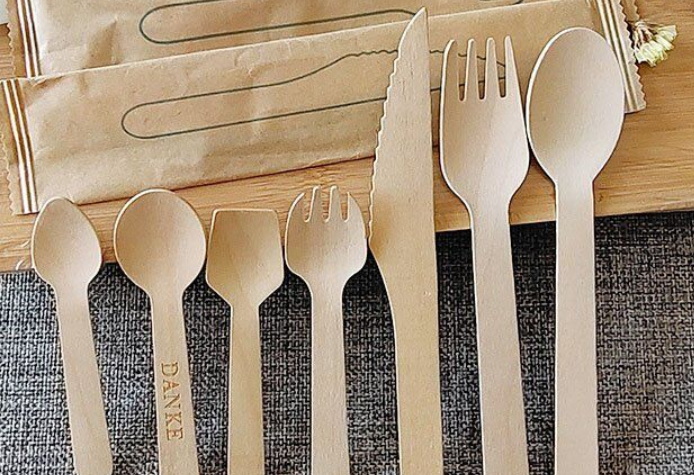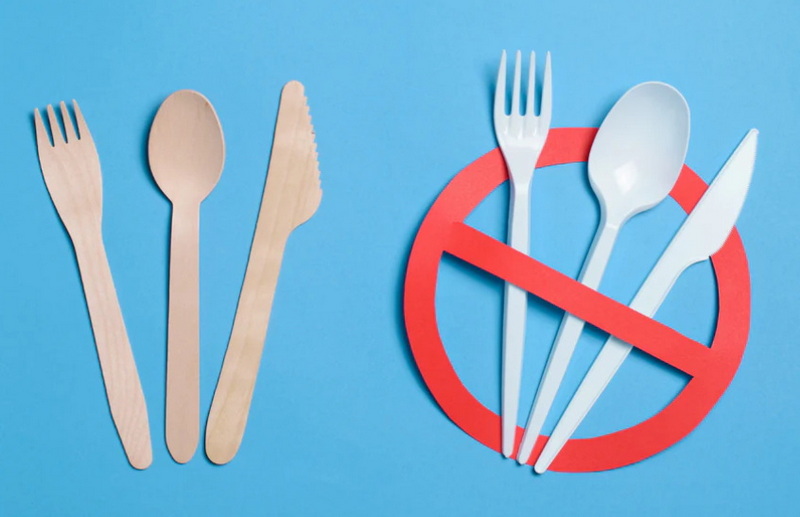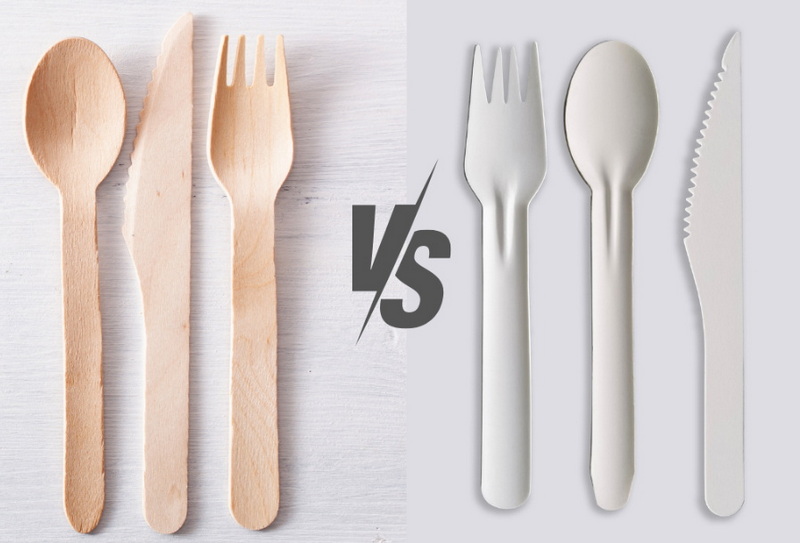
Content Menu
● Introduction to Disposable Cutlery
>> Environmental Impact
>> Health Benefits
● Environmental Comparison
>> Biodegradability
>> Renewable Resources
● Health and Safety Comparison
>> Chemical Safety
>> Microplastics
● Durability and Convenience Comparison
>> Durability
>> Convenience
● Aesthetic Appeal and Versatility
>> Design and Style
>> Versatility
● Conclusion
● FAQs
>> 1. What are the environmental benefits of using wood disposable cutlery?
>> 2. Is wood disposable cutlery safe for health?
>> 3. How durable is wood disposable cutlery compared to plastic?
>> 4. Can wood disposable cutlery be reused?
>> 5. Is wood disposable cutlery more expensive than plastic utensils?
● Citations:
In recent years, the environmental impact of disposable cutlery has become a significant concern. As consumers and businesses seek more sustainable options, wood disposable cutlery has emerged as a popular alternative to traditional plastic utensils. This article will delve into the differences between wood disposable cutlery and plastic utensils, exploring their environmental impact, health benefits, durability, and aesthetic appeal.

Introduction to Disposable Cutlery
Disposable cutlery is widely used in fast food, takeout, and outdoor events due to its convenience. However, the choice between wood disposable cutlery and plastic utensils can have significant environmental and health implications.
Environmental Impact
Wood disposable cutlery is made from renewable resources such as birch or bamboo, which are biodegradable and compostable. This means they break down naturally without leaving harmful residues behind, unlike plastic, which can take hundreds of years to decompose and often ends up polluting oceans and landfills[1][2][3].
Health Benefits
Plastic cutlery can contain harmful chemicals like BPA and phthalates, which can leach into food, especially when heated. In contrast, wood disposable cutlery is made from natural materials and does not pose such health risks[1][8].
Environmental Comparison
Biodegradability
- Wood Disposable Cutlery: Biodegradable and compostable, breaking down naturally within weeks to months[2][3].
- Plastic Utensils: Non-biodegradable, taking centuries to decompose and contributing to pollution[3][12].
Renewable Resources
- Wood Disposable Cutlery: Made from renewable resources like birch and bamboo, supporting sustainable forest management[2][3].
- Plastic Utensils: Derived from non-renewable petroleum-based materials[3][12].

Health and Safety Comparison
Chemical Safety
- Wood Disposable Cutlery: Free from harmful chemicals, ensuring safe use for all ages[1][8].
- Plastic Utensils: May contain BPA and other toxins that can leach into food[1][8].
Microplastics
- Wood Disposable Cutlery: Reduces the risk of consuming microplastics[1].
- Plastic Utensils: Contributes to microplastic pollution in the food chain[3].
Durability and Convenience Comparison
Durability
- Wood Disposable Cutlery: Generally durable for short-term use but can break under excessive force[8].
- Plastic Utensils: More durable and resistant to bending or breaking[8].
Convenience
- Wood Disposable Cutlery: Lightweight and easy to handle, though less convenient for bulk storage[8].
- Plastic Utensils: Highly convenient for daily use and bulk consumption[8].
Aesthetic Appeal and Versatility
Design and Style
- Wood Disposable Cutlery: Offers a natural and charming aesthetic, suitable for various events and themes[1].
- Plastic Utensils: Often lacks aesthetic appeal but is available in a variety of colors[12].
Versatility
- Wood Disposable Cutlery: Suitable for both indoor and outdoor events, though not ideal for hot meals[8].
- Plastic Utensils: Widely used in fast food and takeout due to its heat resistance[8].
Conclusion
In conclusion, wood disposable cutlery offers significant environmental and health benefits compared to plastic utensils. While it may not be as durable or convenient for bulk use, its biodegradable nature and aesthetic appeal make it an excellent choice for those seeking sustainable alternatives. As consumers become more eco-conscious, the demand for wood disposable cutlery is likely to increase.

FAQs
1. What are the environmental benefits of using wood disposable cutlery?
Wood disposable cutlery is biodegradable and compostable, reducing the environmental impact by not contributing to long-term pollution like plastic does. It is sourced from renewable resources, supporting sustainable forest management practices[2][3].
2. Is wood disposable cutlery safe for health?
Yes, wood disposable cutlery is safe for health as it does not contain harmful chemicals like BPA, which are found in some plastic utensils. It is made from natural materials, ensuring safe use for all ages[1][8].
3. How durable is wood disposable cutlery compared to plastic?
Wood disposable cutlery is generally durable for short-term use but can break under excessive force. Plastic utensils are more durable and resistant to bending or breaking, making them suitable for heavy-duty use[8].
4. Can wood disposable cutlery be reused?
Wood disposable cutlery is typically designed for single use and is not recommended for reuse. It can absorb moisture and bacteria, making it less hygienic for repeated use[7][11].
5. Is wood disposable cutlery more expensive than plastic utensils?
Initially, wood disposable cutlery might be more expensive than plastic utensils. However, as demand increases and production costs decrease, the price gap is narrowing. Additionally, the environmental benefits and aesthetic appeal of wood cutlery can justify the slightly higher cost for many consumers[11].
Citations:
[1] https://purpleclay.com/blogs/news/eco-friendly-wooden-disposable-cutlery-forks-spoons-knives
[2] https://westshorecutlery.com/disposable-wooden-cutlery/
[3] https://www.zenpacks.com.au/post/what-s-the-difference-between-wooden-and-plastic-cutlery
[4] https://www.istockphoto.com/photos/wooden-cutlery
[5] https://www.youtube.com/watch?v=PQTqxjuRAc4
[6] https://www.istockphoto.com/photos/plastic-cutlery
[7] https://foodstiks.com/pages/faqs
[8] https://westshorecutlery.com/wooden-cutlery-vs-plastic-cutlery/
[9] https://wonbonwood.com/life-cycle-analysis-wooden-cutlery/
[10] https://www.freepik.com/free-photos-vectors/plastic-cutlery
[11] https://www.realshop.gr/blog/post/14/page/630/en/various-advantages-of-disposable-wooden-cutlery/
[12] https://www.anzhucraft.com/wooden-cutlery-vs-plastic-cutlery/
[13] https://www.vinzorwood.com/guide-for-disposable-wooden-cutlery-waxed-or-not/
[14] https://albizpackaging.co.uk/blogs/news/8-benefits-of-using-wooden-cutlery
[15] https://wonbonwood.com/disposable-wooden-cutlery-benefits/

















